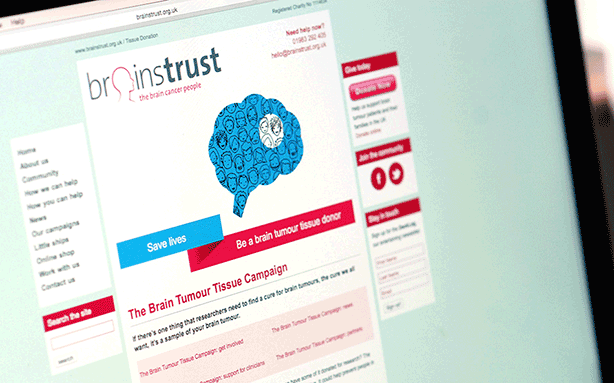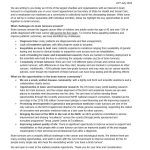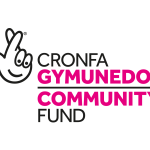Save lives – be a brain tumour tissue donor
Brain tumour tissue is removed everyday by surgeons but very few people know they can donate brain tumour tissue to research. A new campaign launched today [Tuesday 24 February] at the University of Bristol led by leading medical researchers and charity, brainstrust seeks to raise awareness for patients and healthcare professionals about donating brain tumour tissue and helping researchers find a cure for this disease.
Just one third of surgical patients offered opportunity to consent
A recent national survey by North Bristol NHS Trust, BRAIN UK and brainstrust indicated that only 30 per cent of brain tumour patients are offered the opportunity to consent for their brain tumour tissue to be used in research. Yet a recent poll by brainstrust suggested that over 90 per cent of patients would be keen for their tissue to be used.
Over 55,000 people in the UK are living with a brain tumour, 4,750 individuals are diagnosed with brain cancer every year and a further 4,500 are diagnosed with non-invasive tumours of the central nervous system.
However, many people are unaware that researchers do not have enough tissue to carry out their research and this is slowing down their work. By patients giving their consent, medical researchers will be able to use the donated brain tumour tissue for research into better treatments and to help find a cure for brain cancer.
The Brain Tumour Tissue Campaign will close the gap by addressing the following issues:
- Increasing patient awareness around donating brain tumour tissue;
- Ensuring healthcare professionals understand the processes involved;
- Helping centres engage in the tissue banking network.
The public can help improve brain tumour research
Dr Helen Bulbeck, Director of Policy and Services at brainstrust, added: “There is a fantastic opportunity here for the brain tumour patient community to drive significant improvements in brain tumour research simply by starting a conversation about tissue donation with their consultants. This is a positive campaign: the team driving this work is looking to support the clinical community in taking the simple steps required to improve consent rates, which will in turn help us better understand and manage this devastating disease more effectively.”
Dr Kathreena Kurian, Campaign Champion, Head of the Brain Tumour Research Group and Senior Clinical Lecture in the School of Clinical Sciences at the University of Bristol and a member of the BRAIN UK committee, said: “This project is an excellent opportunity to let the public know how they can support medical researchers and help fight brain tumours.
“By giving consent for tumour tissue removed at operation to be used for research the public can help researchers combat this devastating disease to benefit future generations of brain tumour patients.”
Professor James Nicoll, Director of BRAIN UK, said: “I am delighted that brainstrust and Dr Kurian are leading this important campaign to encourage people with brain tumours to donate samples for research. This initiative fits very well with BRAIN UK which is a network of the hospitals that cares for patients with brain diseases, providing tissue to researchers. We look forward to working together with Dr Kurian and brainstrust in order to support research leading to better understanding and treatment of these difficult conditions.”
Dr Suzy Lishman, President of the Royal College of Pathologists, added: “Increased tissue donation would empower patients, improve disease management and benefit future research.”
Join The Brain Tumour Tissue Campaign today
To join The Brain Tumour Tissue Campaign, all you need to do is read this page, then start a simple conversation. Click here to find out more.

Brain Tumour Tissue Banking
Last autumn [October 2014] a new tissue banking initiative was announced called the Brain Tumour Archive Network.
The new network, or tissue bank, links archives of brain tumour tissue in a virtual network so that researchers can gain access to unprecedented levels of tissue to support their much needed research into better treatments and a cure for brain cancer.
Creation of the network was led by brainstrust and BRAIN UK supported by a wider group of brain tumour charities including Charlie’s Challenge, Brain Tumour Research and umbrella group Sophie’s Wish.
You can read more about this initiative here.









